Sparkling Wines of Hundred Hills
Notes from my recent visit to this young project in the hills of Oxfordshire
I arrived at Hundred Hills on a sultry day in early July. A light breeze animated the vines while scudding clouds provided momentary relief from the midday sun. The heat made it hard to envision this landscape in deep winter, hibernating. My host, Cat Hamlet, said this particular spot is the farthest point from the coast in all of Britain, and also that the nearby village of Benson, at the head of the valley, is one of the country’s coldest towns. Not today.
We strolled up the vine rows through a thick cover of grass, kicking scattered chunks of flint dusted with snow-white calcite. The site sits atop 150 meters of chalk; think White Cliffs of Dover or, for that matter, Riems or Épernay. The vineyard is planted only to Pinot noir and Chardonnay, which are used exclusively to make vintage sparkling wines.
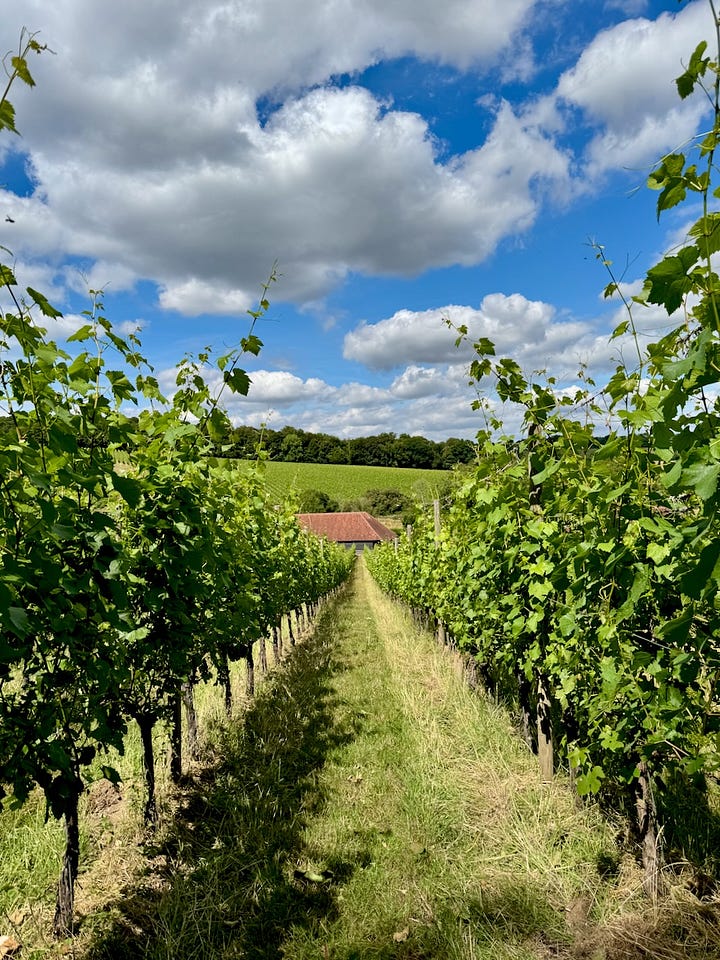
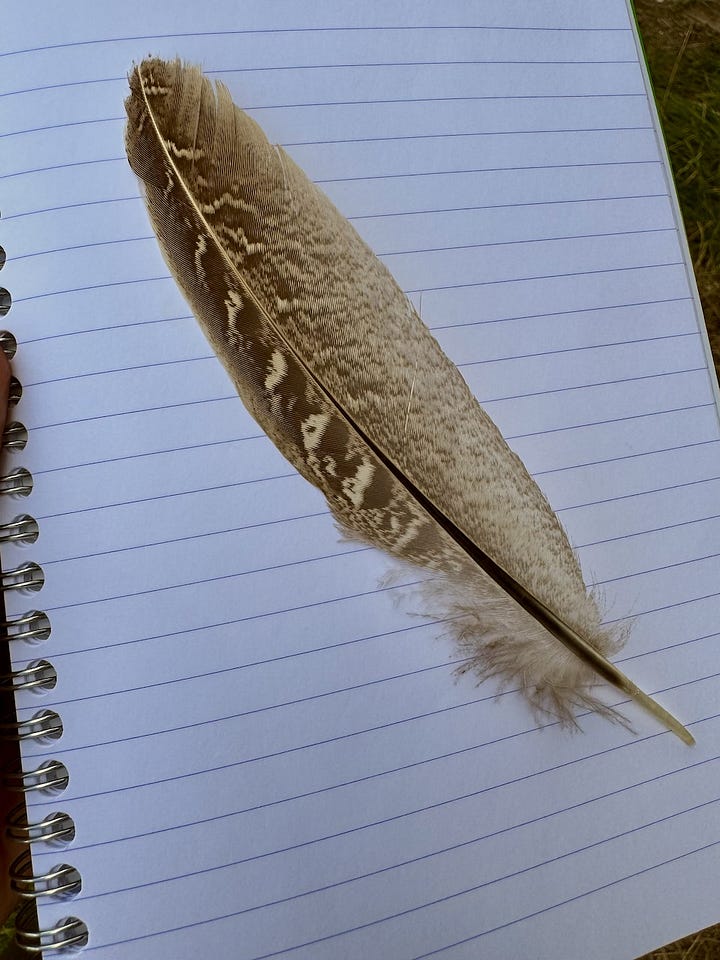
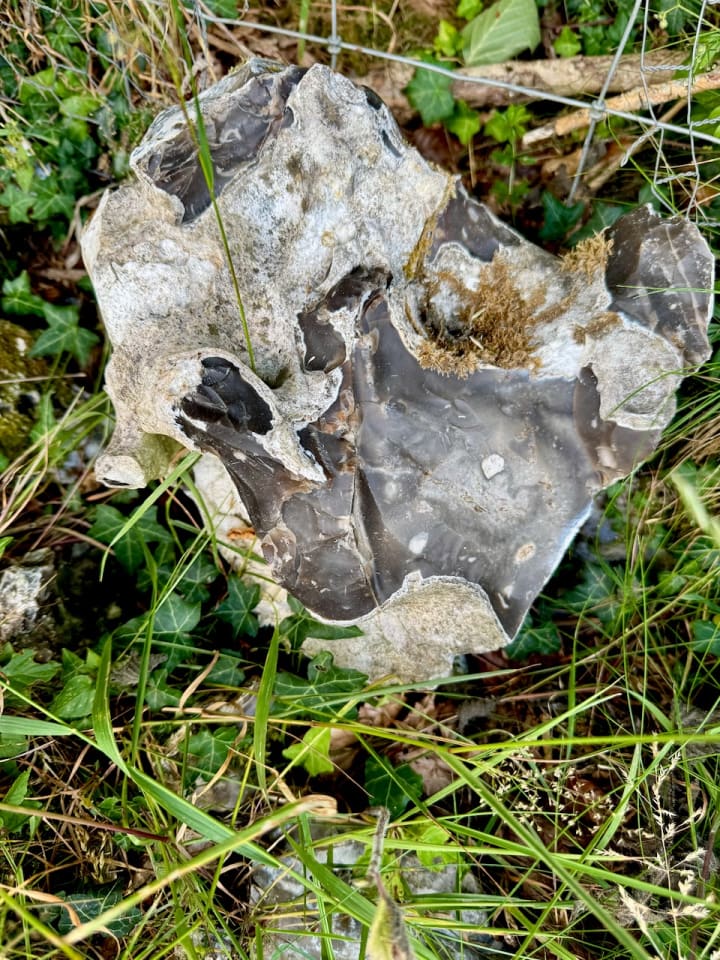

The project is the brainchild of married couple Stephen and Fiona Duckett. The narrative begins with our heroes popping the cork on a bottle of sparkling wine from Nyetimber, in West Sussex. Its deliciousness surpassed their expectations, setting them on a multi-year mission to find and plant a vineyard of their own. (That’s one expensive bottle of wine.)
The Ducketts scoured the British countryside, looking at 300 properties and seriously evaluating 100 before winnowing it to four finalists. This hilly 17-hectare site, about 30 minutes southeast of Oxford, won the draw. They purchased in 2012, planted in 2014, and enjoyed their first small, experimental harvest in 2016.
The vines rise up on either side of a broad valley onto hills crowned with forest. Some of these pitches are steep, as much as 45 degrees, concave and rolling. The multiple exposures delight viticulturists, while slopes provide good air drainage that mitigates frost from April through mid-May. During the growing season, the vines enjoy a 20℃ temperature excursion between day and night which helps preserve the fruit’s acidity during the crucial ripening phase. The region gets 1300 mm of rain per year, so there is no need to irrigate, especially because chalk excels at holding moisture for vine roots to sip ad hoc.
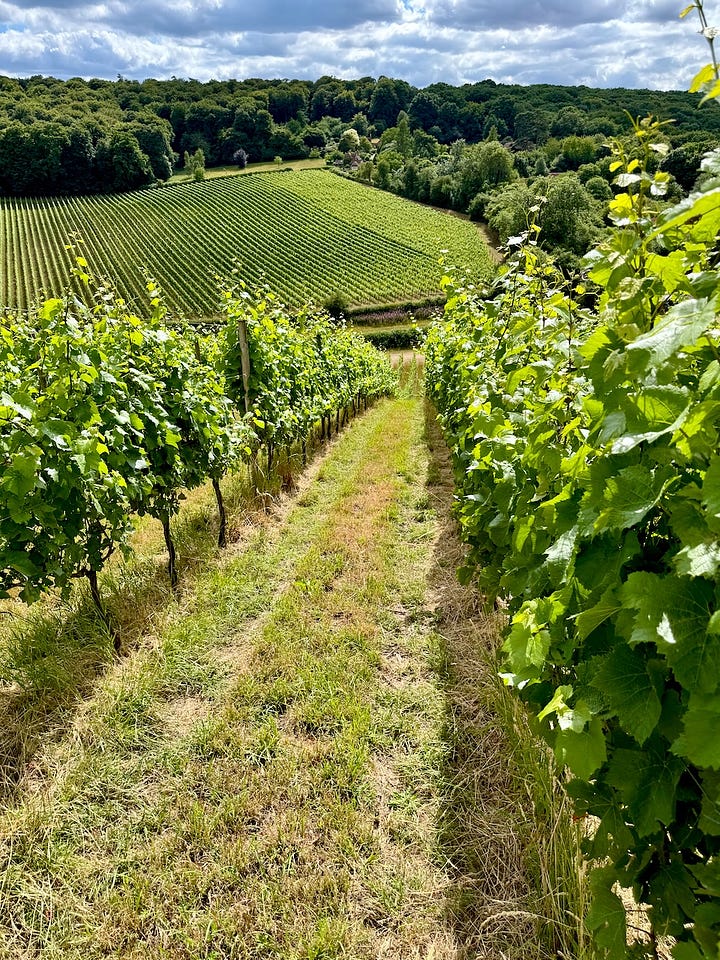
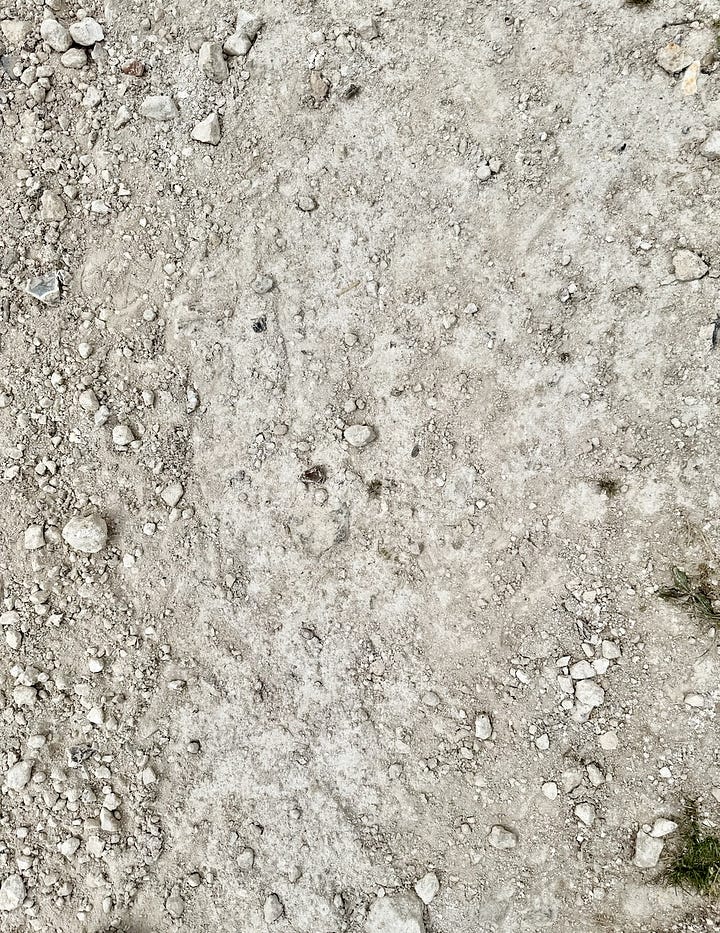
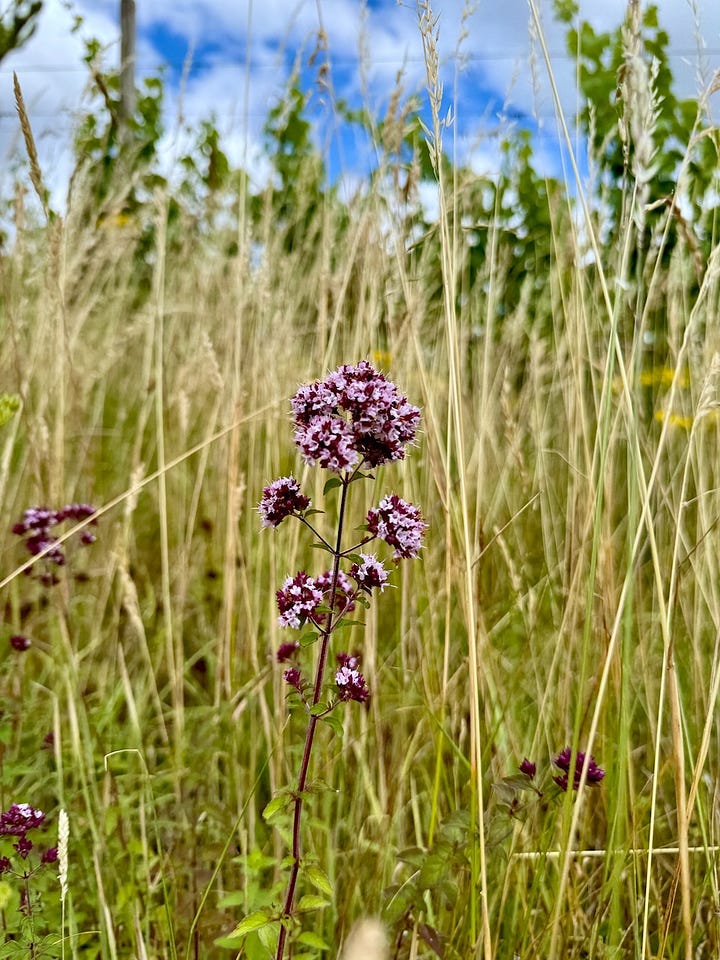
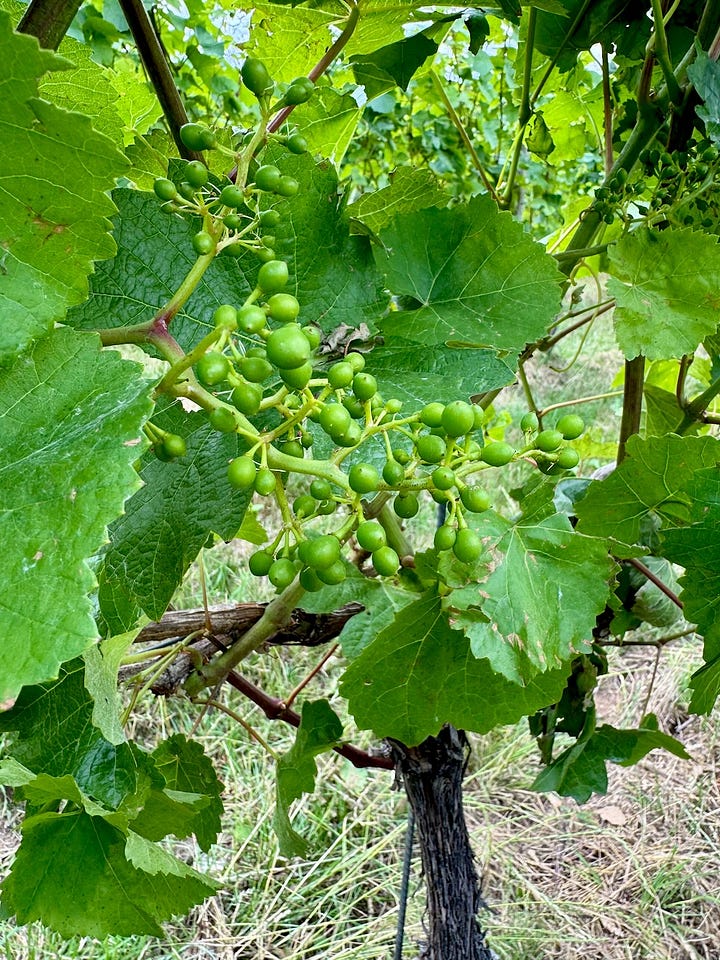
Stephen Duckett makes the wine. It’s a career shift from his decades as a venture capitalist in the tech space, but that experience endowed him with the analytical and financial prowess to pull off the new venture. Land prices in 2012 ranged between £5K and £10K per hectare, but that’s cheap compared to Champagne or Burgundy (it also had the advantage, unlike French terroir, of being available). The couple built a winery in the valley between their vines, a building that draws inspiration from a local agricultural vernacular, the Chiltern Barn. It looks like it’s always been there.
This spring the vines got started early, so the team expects to harvest in the first week to 10 days of October (more southerly Sussex and Kent pick a week sooner). They make twenty or more base wines per year, the Chardonnay often fermented in oak, with bâtonnage, while the Pinot is usually treated to stainless steel. In some years, when the pH is too low or malic acid too high, or both, they let the lots go through malolactic conversion, but generally prefer to preserve acidity. The wines age for 30 months prior to disgorgement. Production is steady, about 6,000 bottles per year, with prices ranging from £40 to £90. The majority is sold directly to consumers or through restaurants.
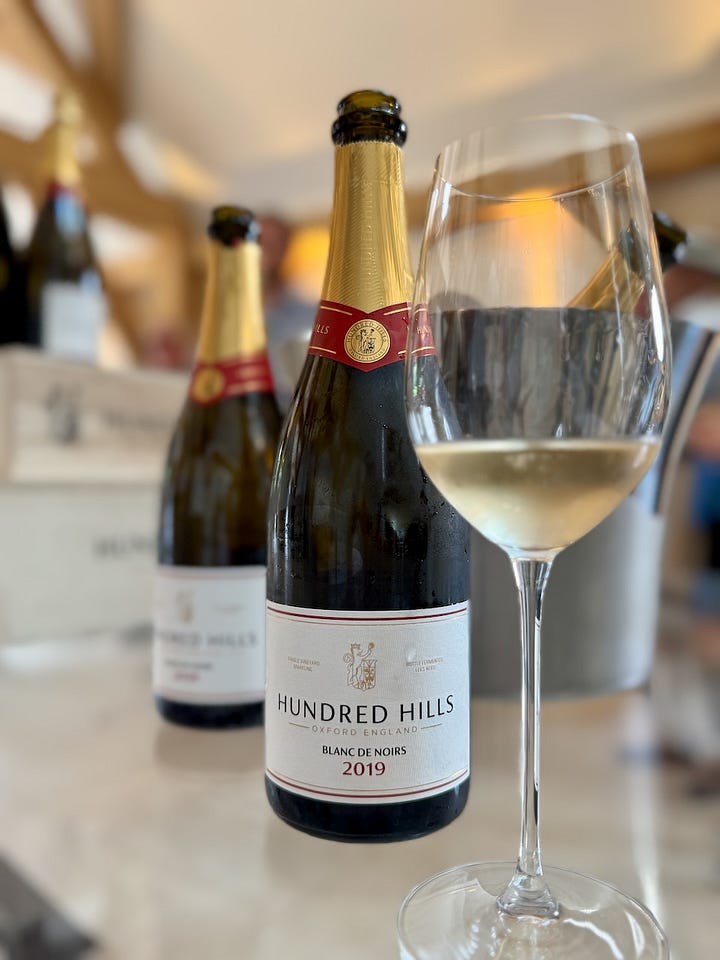
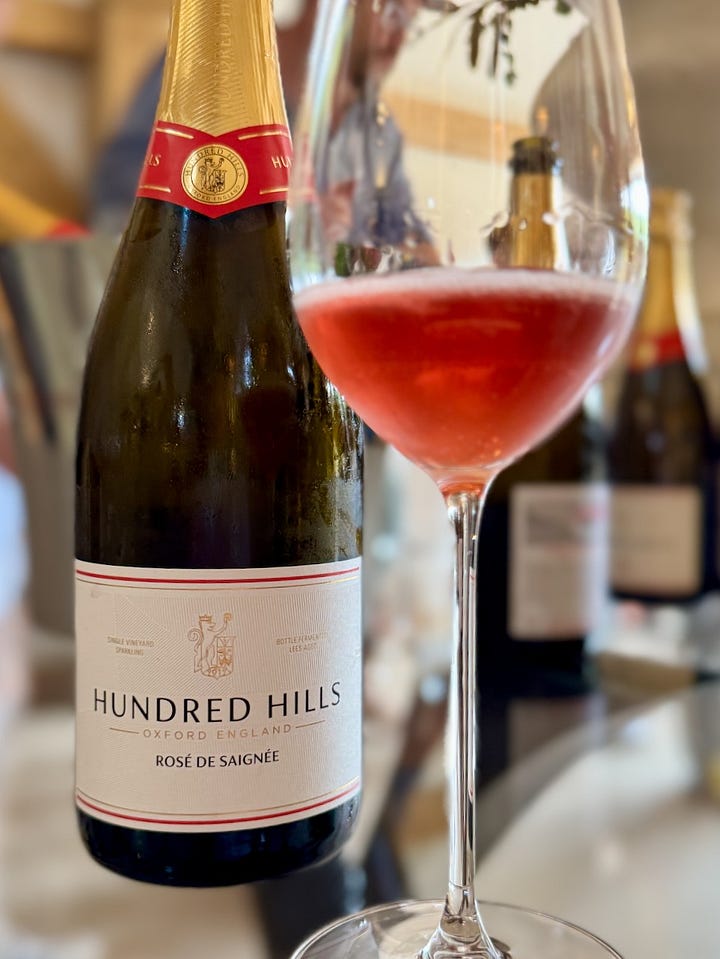
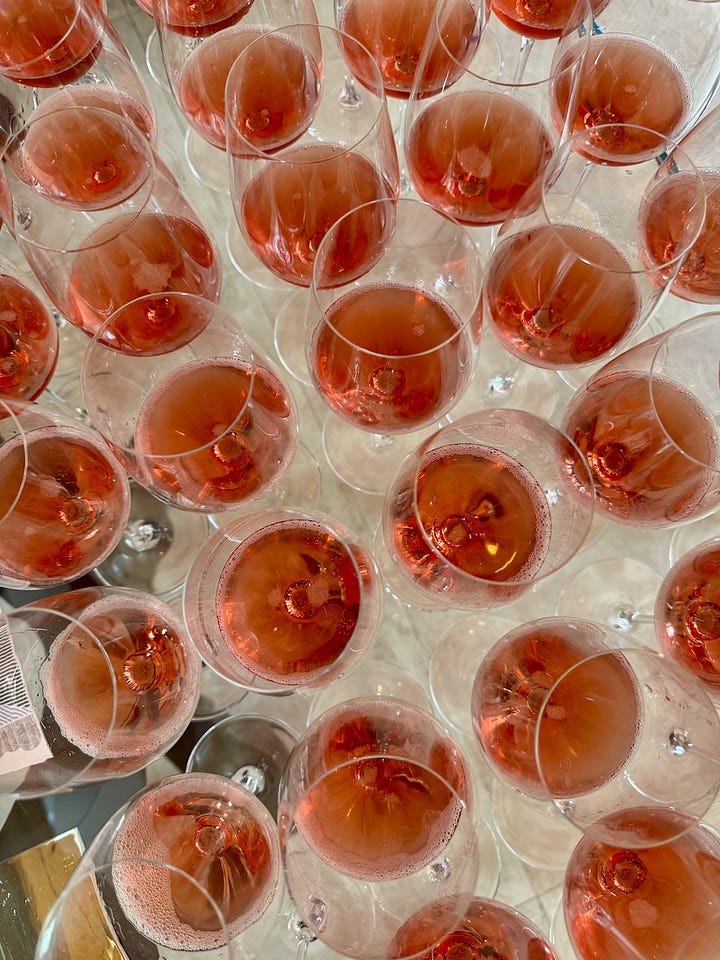
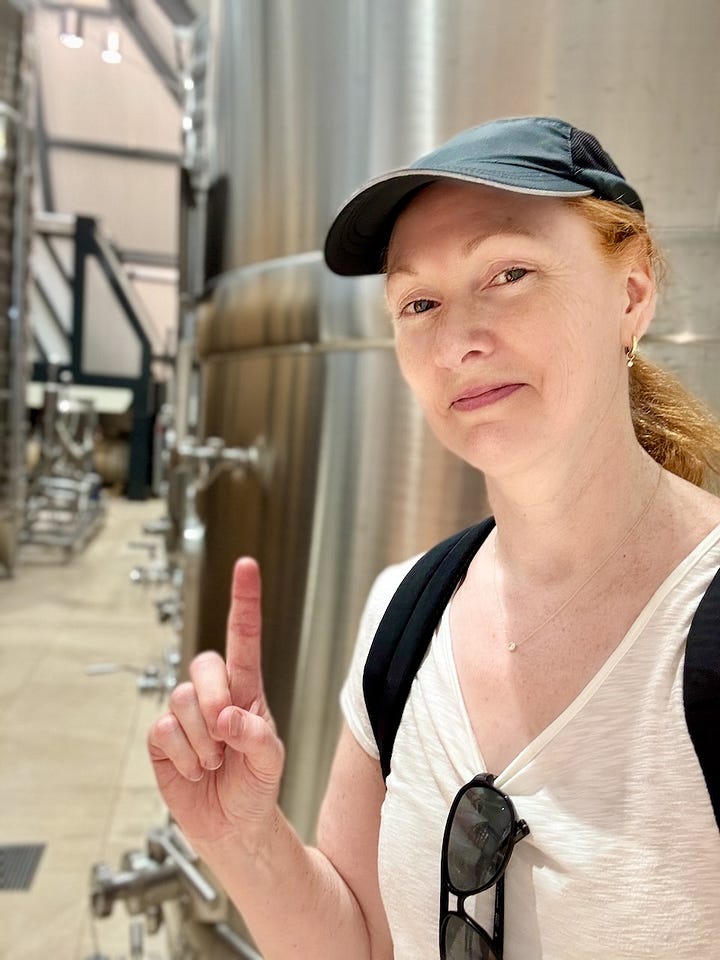
After huffing up and down the hills, it was time to retreat to the cool of the cellar. Since I was in the neighborhood for a Pinot noir symposium, Cat and the team opened their three Pinot cuvées, a blanc de noirs and two rosés made by saignée method. They were all charming, with mouth-filling flavors and cut-crystal edges. My notes are below.
Hundred Hills Winery Blanc de Noirs Oxford 2019
This wine is sourced from a single parcel of Pinot noir. It’s gold with a rose-gold glint and smells of honey, cherries, and nut. Texturally enormous, it has a huge, spumy mousse cut by an arrow of acidity. Something stony blooms at the end.
Hundred Hills Winery Rosé de Saignée Oxford 2021
A wine of contrasts: light and dark, pink and black, fruit and meat, earth and herbs. Watermelon pink, it has a darker fragrance; I get mushroom and thyme, lees and bread. It’s serious, almost unyielding, and takes a while to surrender its fruits and other delicate charms. I’d like to taste it again in three years.
Hundred Hills Winery Rosé de Saignée Oxford 2018
Three years older than the 2021, so, vintage aside, I get my wish. This is a quiet wine, not as stern as the 2021 but still complex, maybe complicated. There’s more aromatically and also along the flavor continuum; I get yellow cherries and Mandarin orange, plus fey aromas of bread and basil. The texture is creamy, and once it warms the aging notes reveal themselves in senses of bitter cherry or amaretto. Its firm acid armature ensures it remains fresh and linear, and it finishes with reminders of wet stone and chalk. This is a serious, complex wine that has learned how to smile.



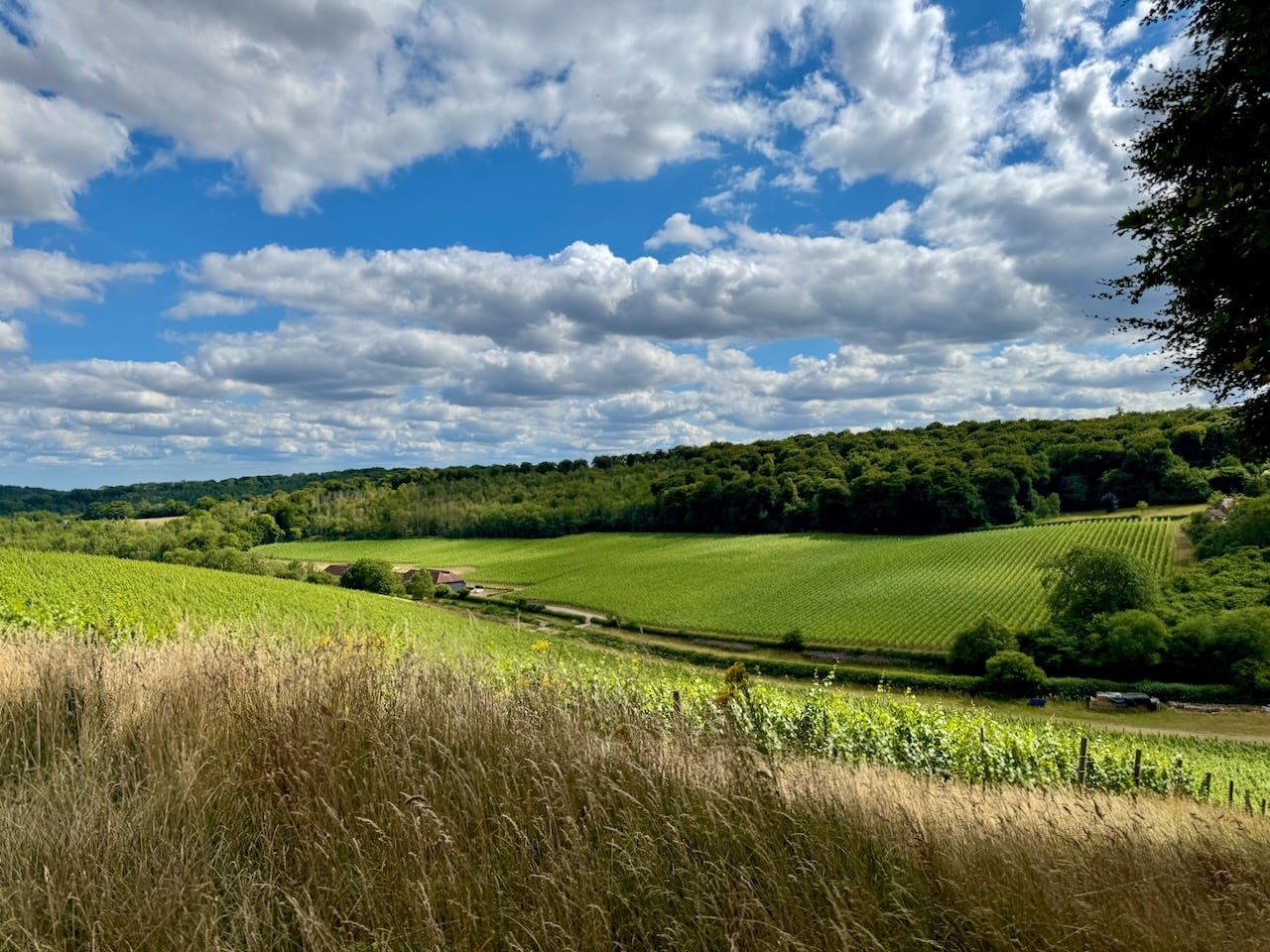
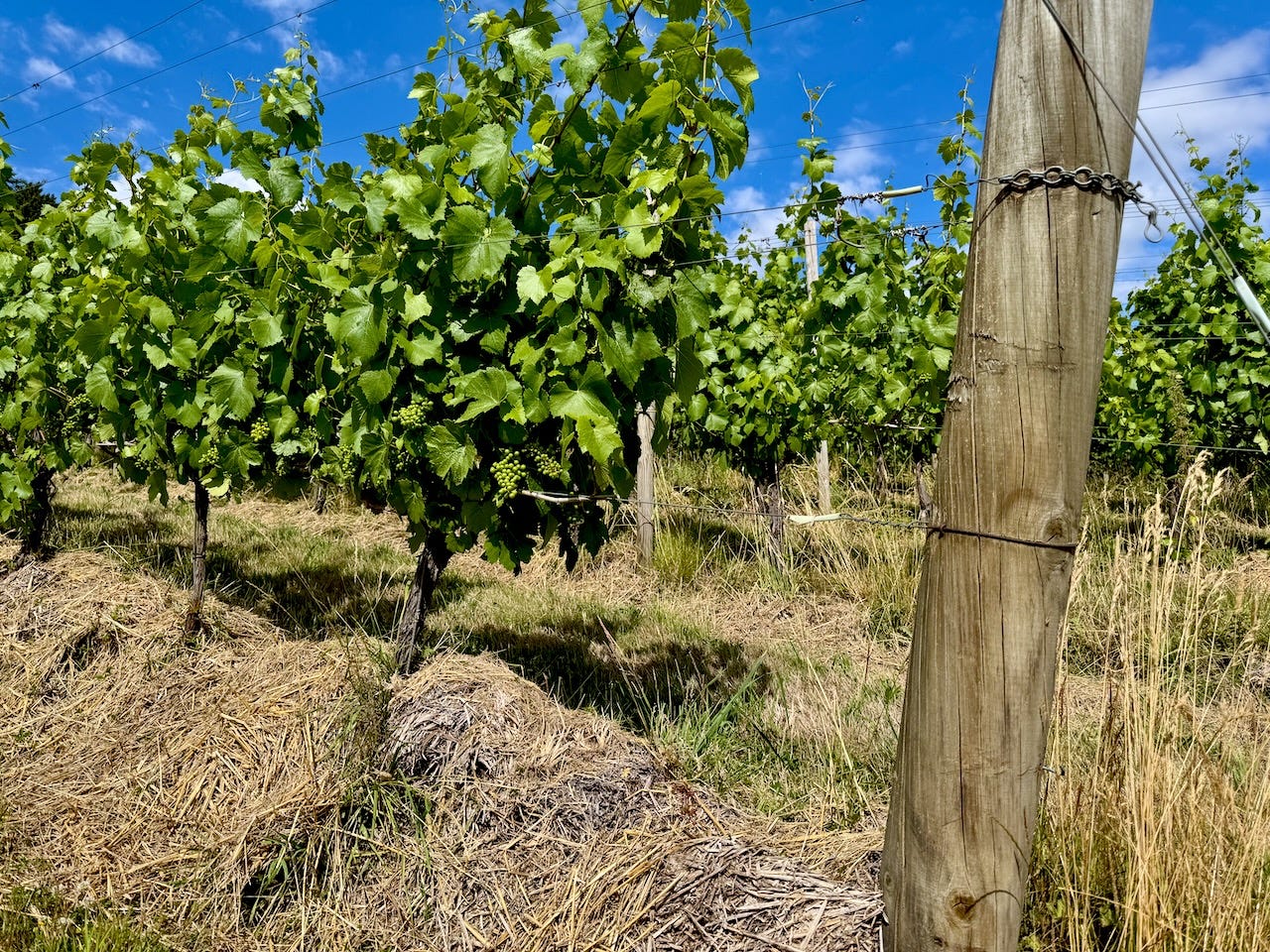
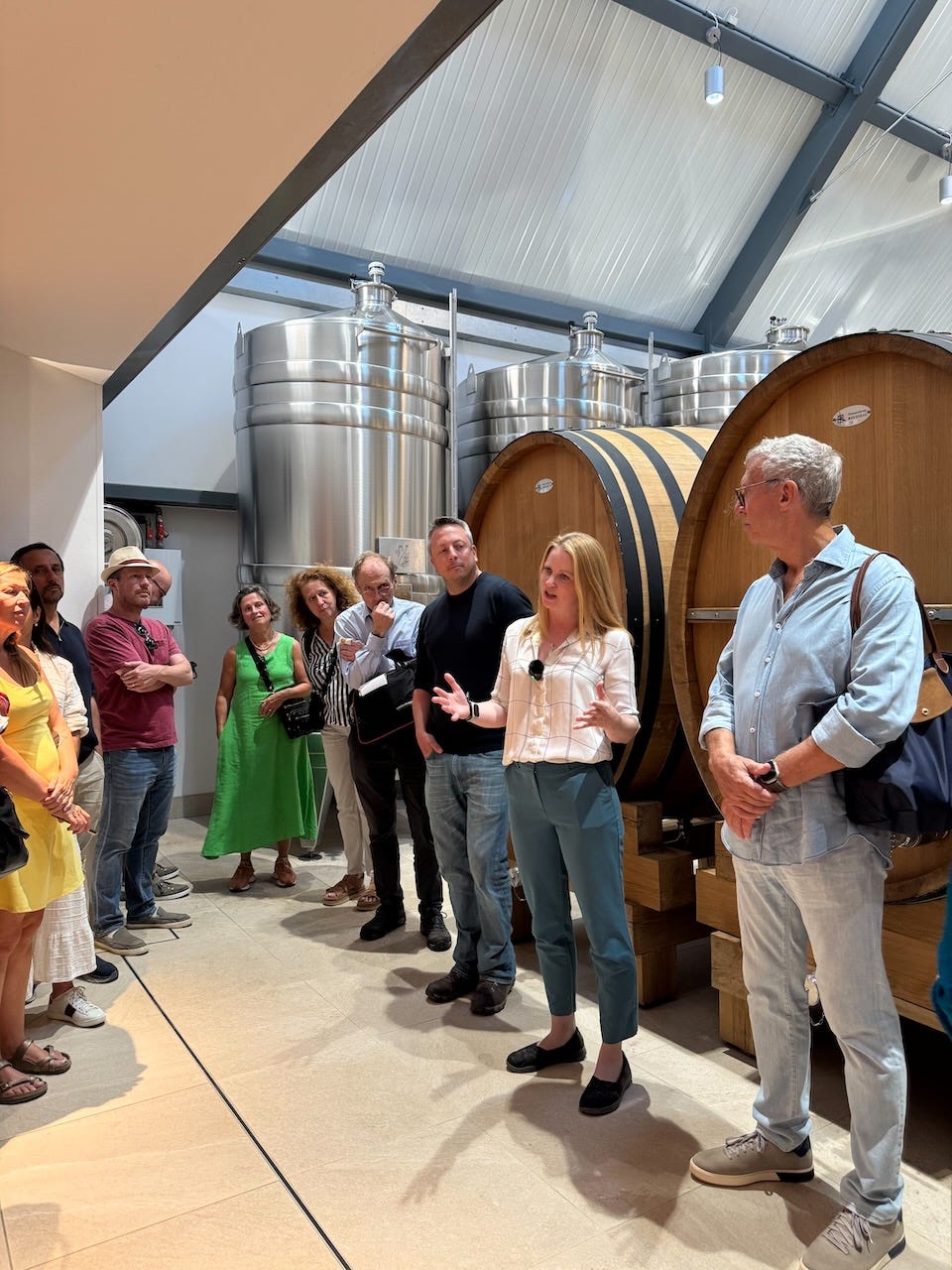
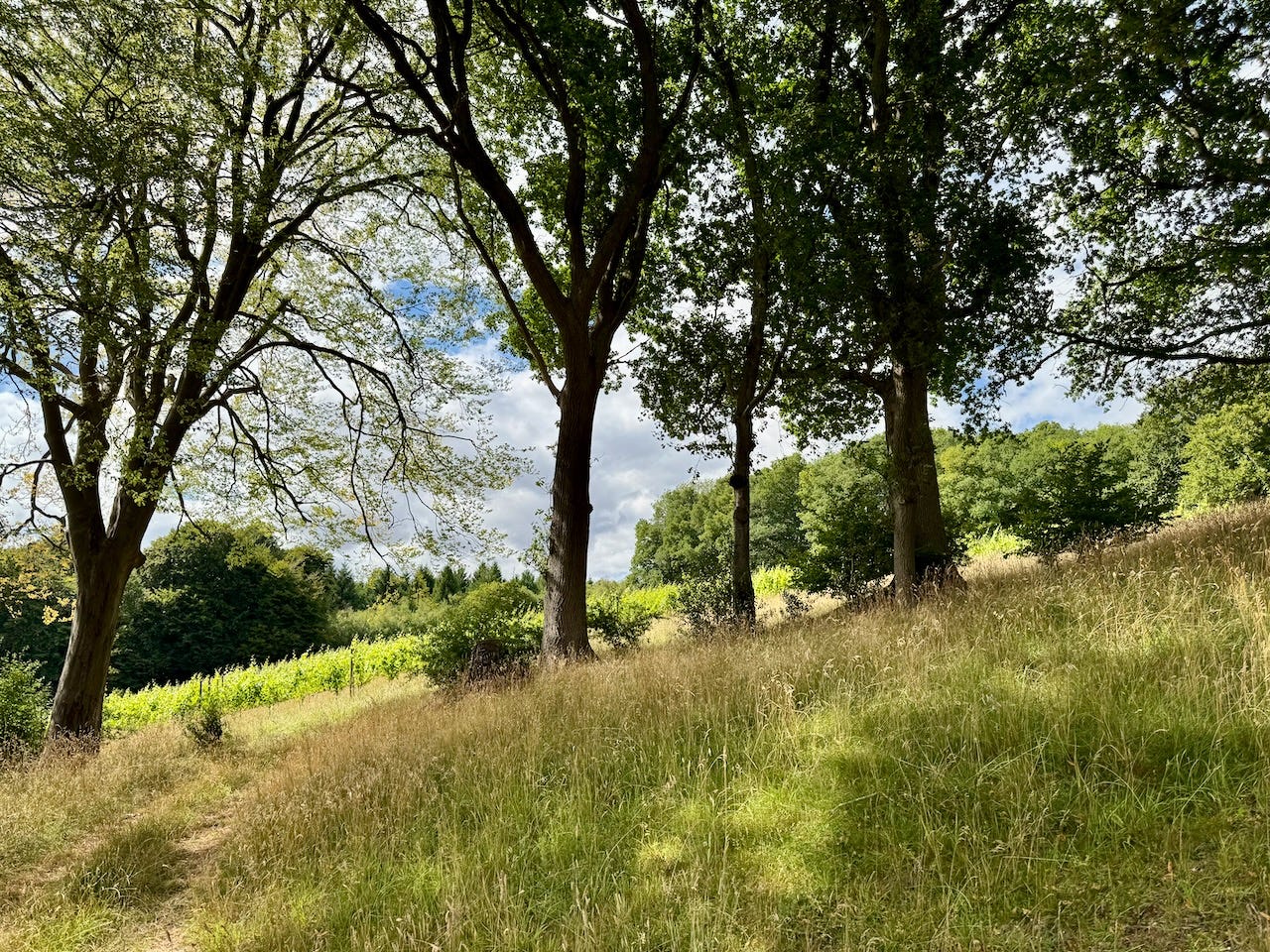
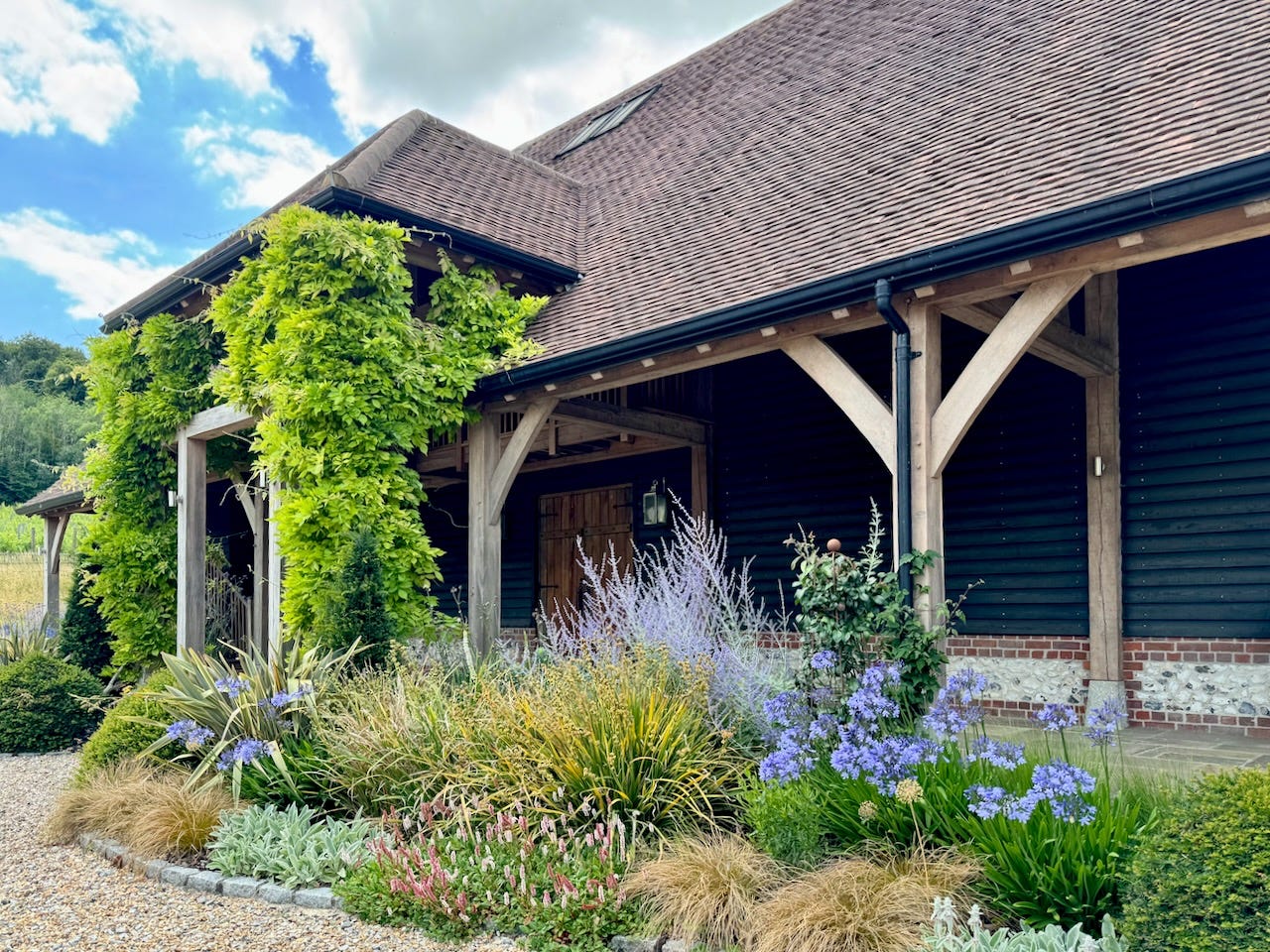
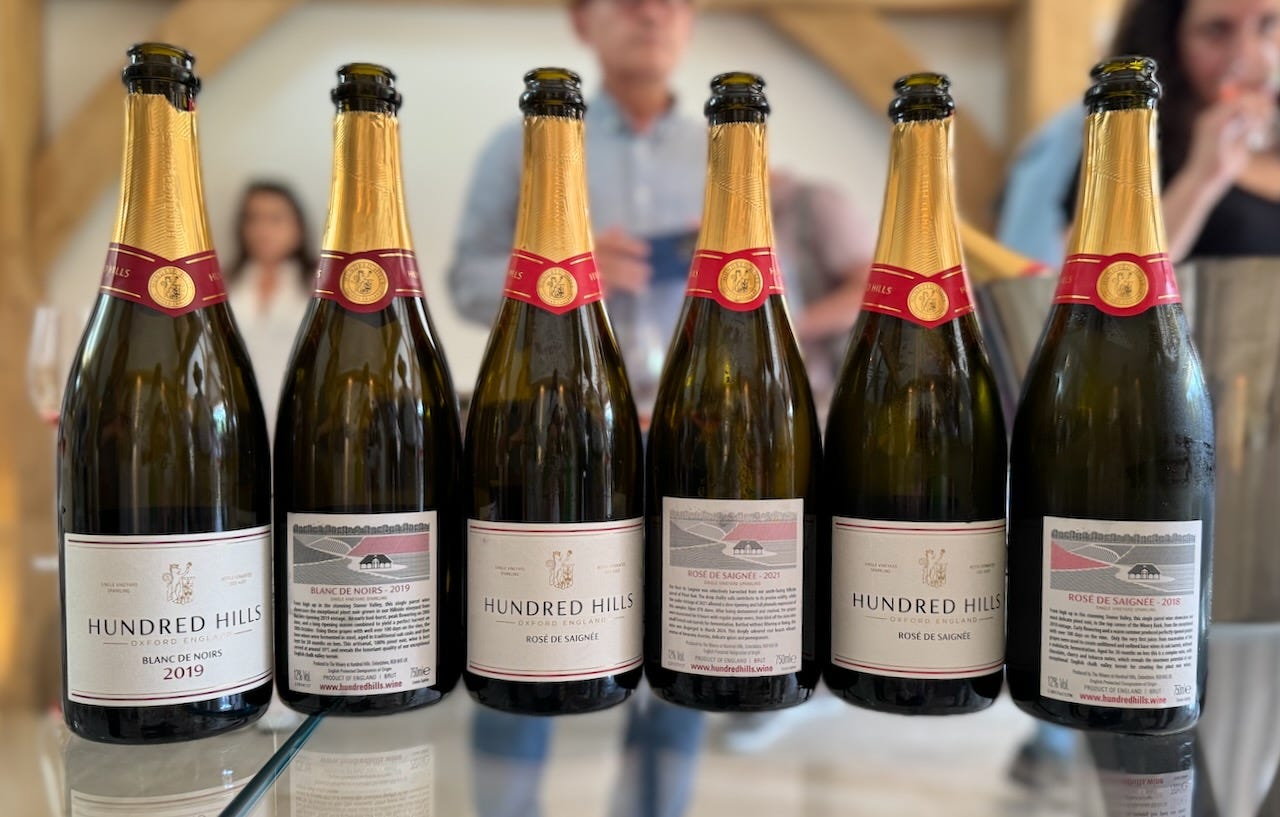
Interesting report. I’ve only had a small handful of British bubblies (all served blind as it happens), and I am intrigued. It’s a rare early glimpse where there seems more promise than hubris.